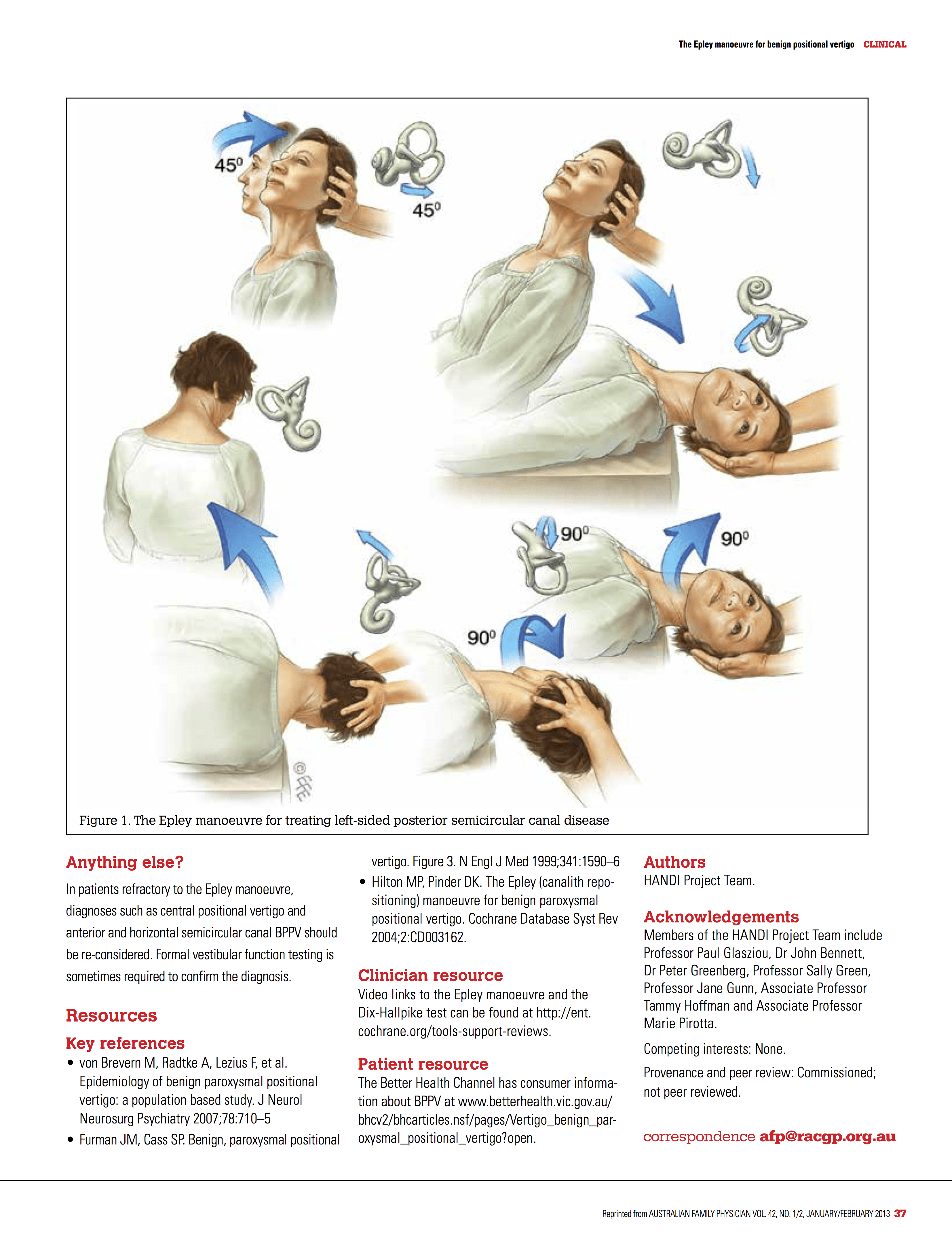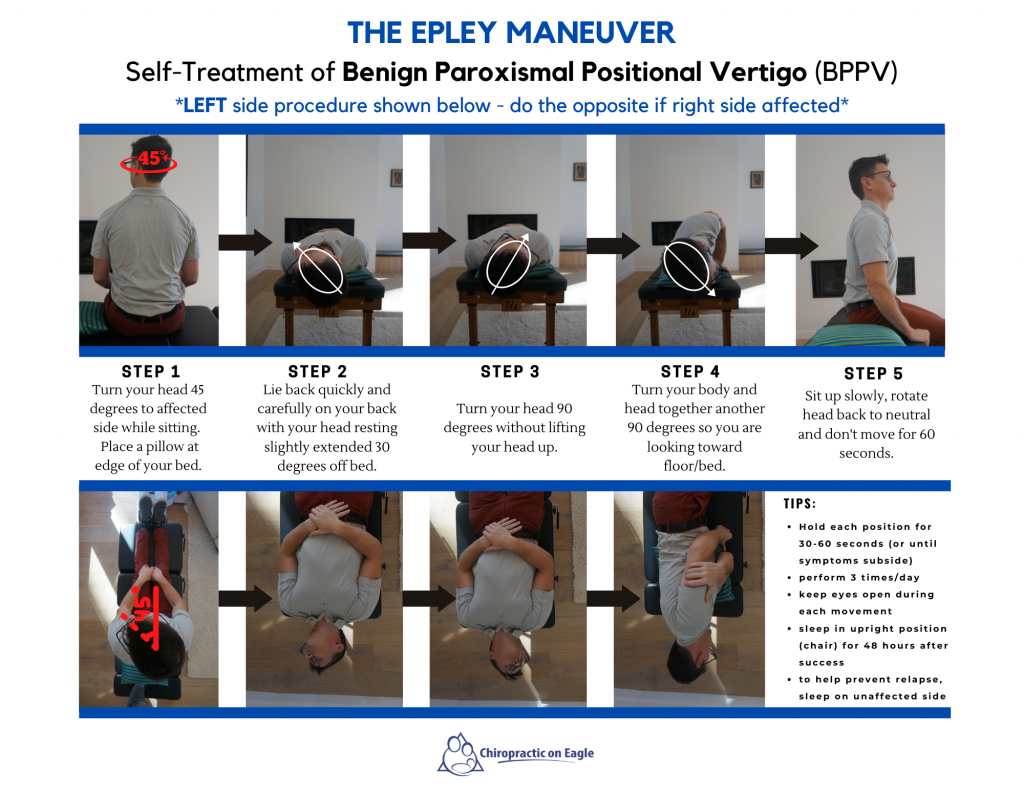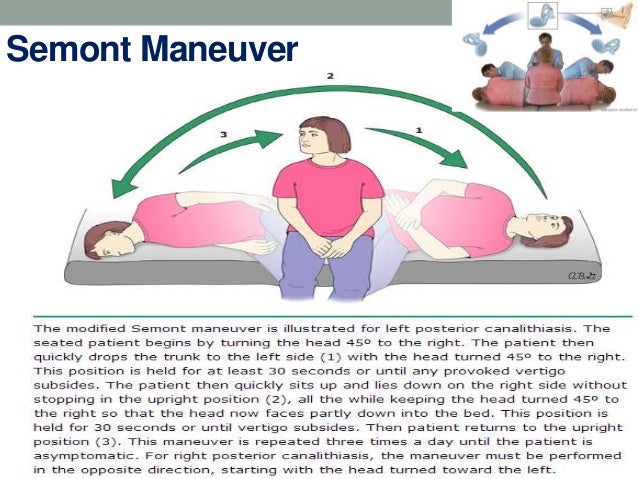

These are head movements that correct the inner ear problem that causes.

Proprioceptive/Balance Exercises: This type of therapy helps reduce vertigo symptoms and improve balance. Your health care provider may have treated your vertigo with the Epley maneuver.

BPPV, Benign paroxysmal positional vertigo, is caused by excessive debris in one of the canals of the inner ear. In this condition, the vertigo is precipitated by certain head. It can also help improve symptoms associated with dizziness, such as difficulty in concentration and thinking. THE EPLEY MANEUVER TO TREAT BPPV DIZZINESS. Background: Benign paroxysmal positional vertigo (BPPV) is a common cause of vertigo. Baqai Medical University, Karachi, Pakistan. Head-Elevated Activities: This type of therapy helps reduce the number of episodes of vertigo. Application of epley maneuver in treating Benign paroxysmal positional vertigo (bppv).Gaze Stabilization Exercises: These exercises help maintain balance by improving your ability to focus on a stationary object while the head moves around.Epley Maneuver/Repositioning Maneuver (recommended for people with BPPV) is an example of this type of therapy. The goal of this therapy is to improve the patient’s symptoms and maintain healthy inner ear function. Vestibular Rehabilitation Therapy: This therapy uses exercises to strengthen the ear parts responsible for maintaining balance. Around 20 of BPPV cases are said to resolve within 4 weeks and up to 50 up to 3 months without treatment, but recurrence is reported between 10-18 after 1.doi:10.The doctor may recommend different types of exercise therapies depending on what is triggering your vertigo. Turn your head 90 degrees to the left, without. Your shoulders should now be on the pillow, and your head should be reclined. Quickly lie back, keeping your head turned. Efficacy of Epley's maneuver in treating BPPV patients: A prospective observational study. The maneuvers are typically done twice a day until patients can go three consecutive days without experiencing any symptoms, so the typical duration for most. Follow these steps if the problem is with your right ear: Start by sitting on a bed. Gaur S, Awasthi SK, Bhadouriya SK, Saxena R, Pathak VK, Bisht M. Doctors use the Dix-Hallpike test (sometimes called the Dix-Hallpike maneuver) to check for a common type of vertigo called benign. Benign paroxysmal positional vertigo and head position during sleep. Medically Reviewed by Melinda Ratini, DO, MS on March 03, 2022. Benign paroxysmal positional vertigo (BPPV). There are physical positions - collectively known as the Epley Maneuver - that can be done to help alleviate the vertigo symptoms almost immediately, accor. Effectiveness of the Epley's maneuver performed in primary care to treat posterior canal benign paroxysmal positional vertigo: study protocol for a randomized controlled trial. Benign Paroxysmal Positional Vertigo (BPPV) and Epley Manoeuvre Sitting upright with head turned 45 degrees, towards affected side. These movements bring the crystals back to the utricle. This study aimed to evaluate the effects of the.
VERTIGO MANEUVER SERIES
Treatment of benign paroxysmal positional vertigo. John Epley designed a series of movements to dislodge the crystals from the semicircular canals. Background: Benign paroxysmal positional vertigo (BPPV) is the most common type of peripheral vertigo. Benign paroxysmal positional vertigo: An integrated perspective. A comparison between the effect of Epley’s maneuver and Brandt-daroff exercise in improving the quality of life (QOL) in patients with benign paroxysmal positional vertigo (BPPV).


 0 kommentar(er)
0 kommentar(er)
